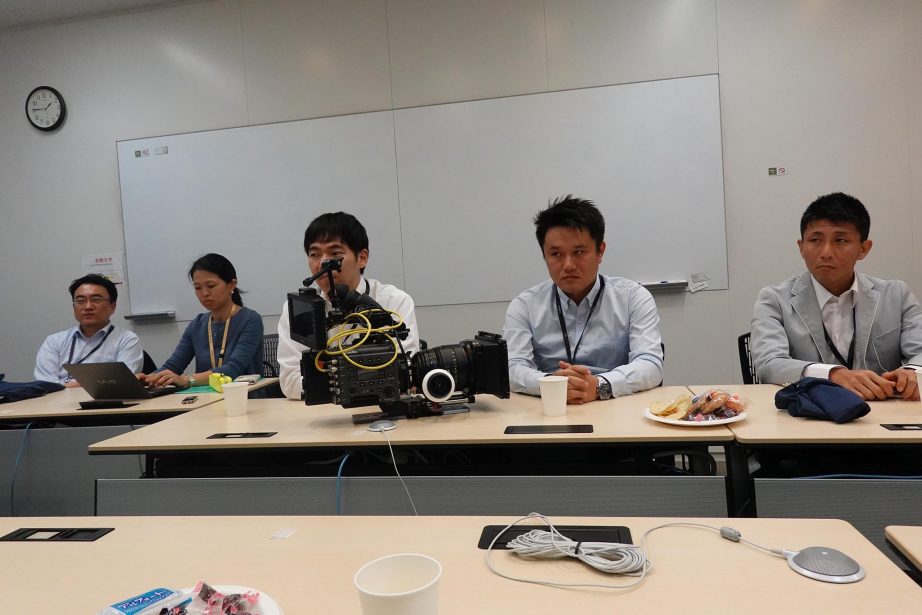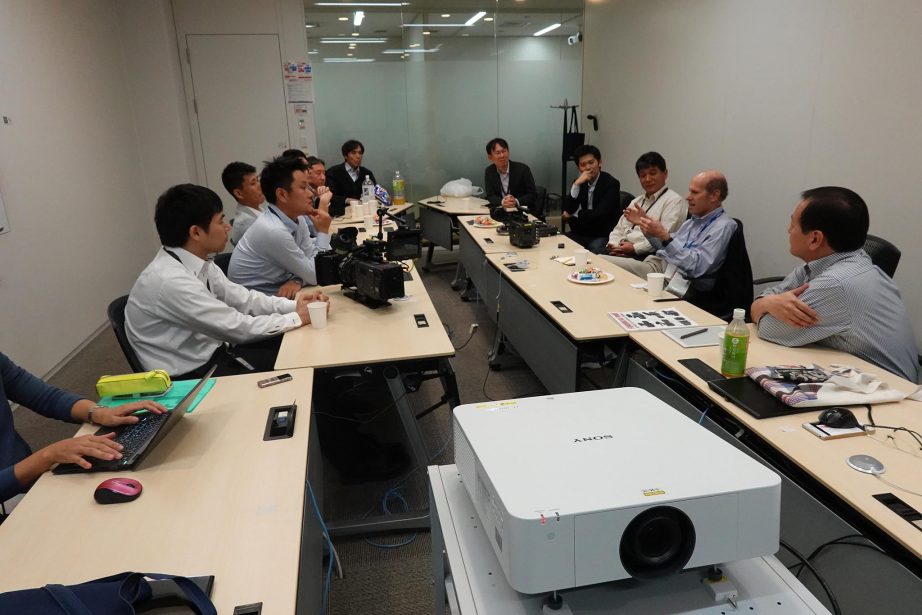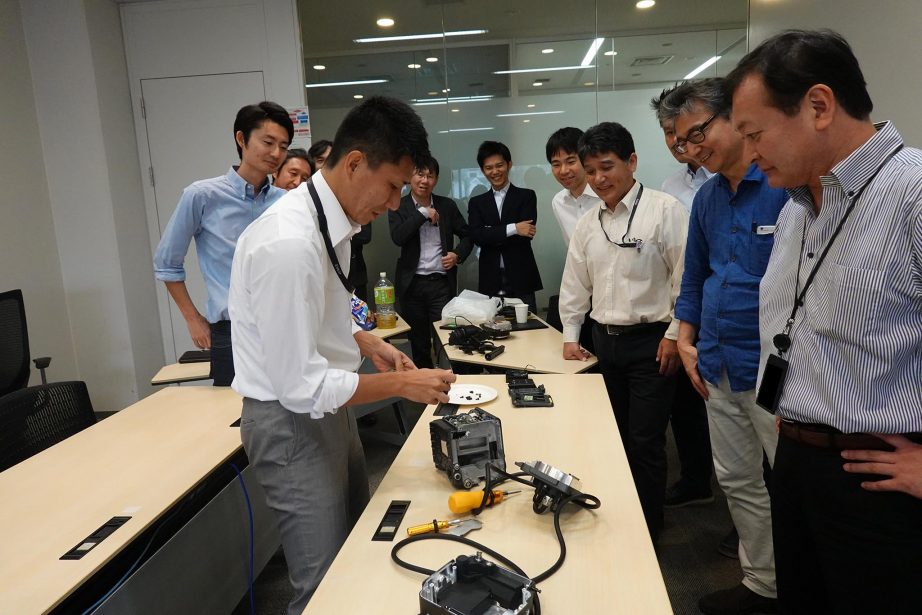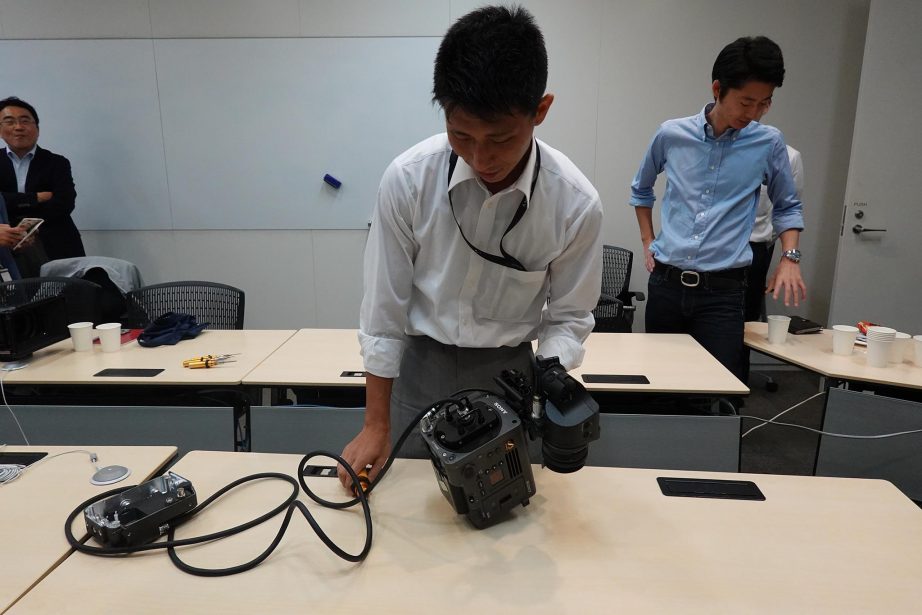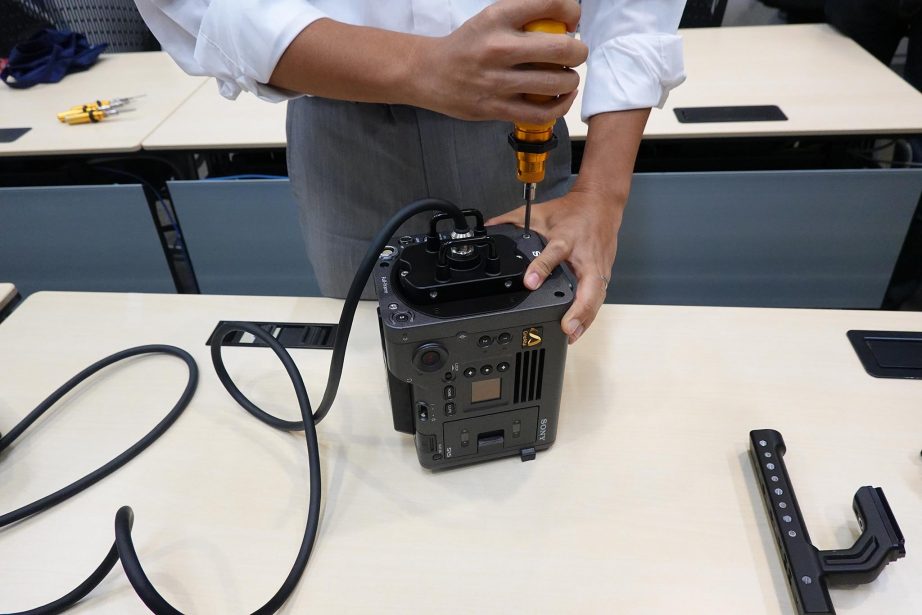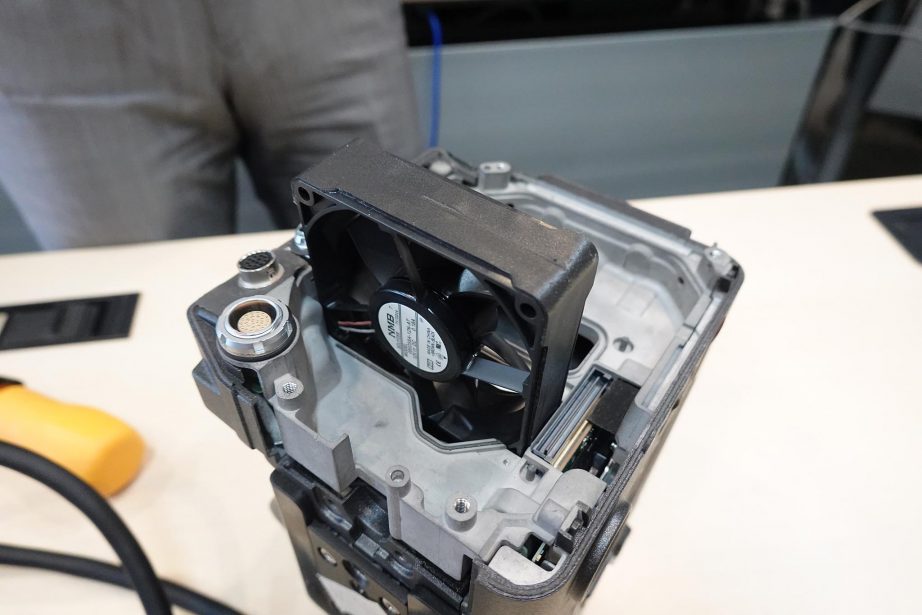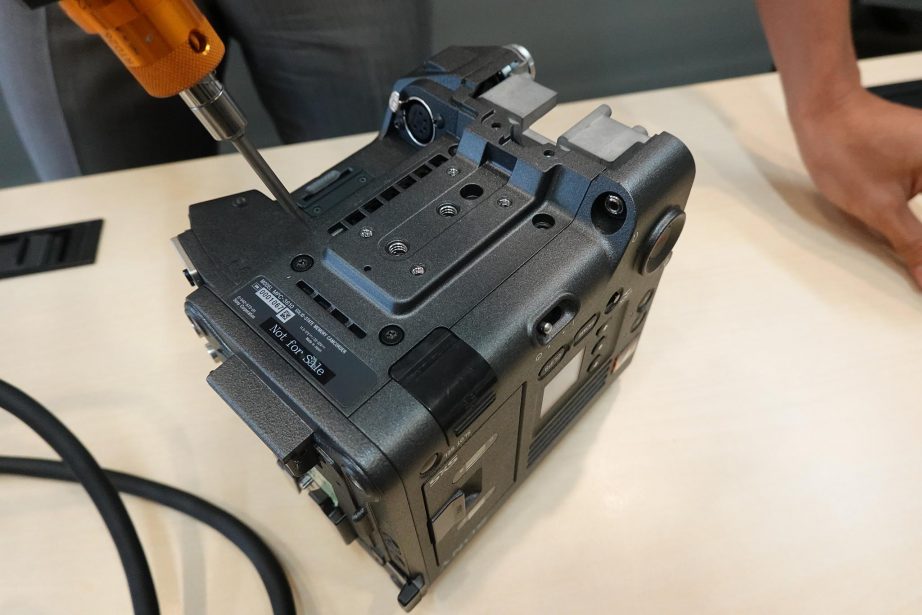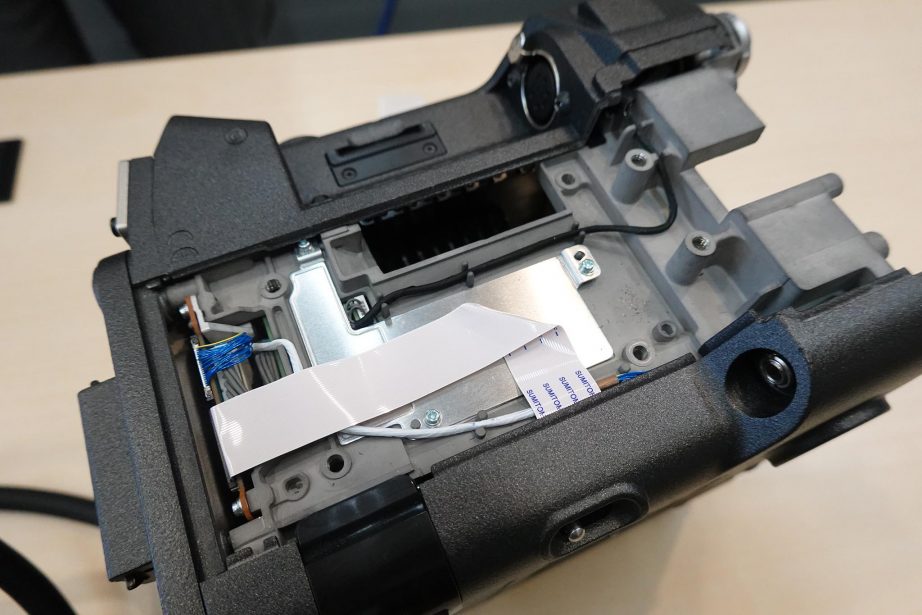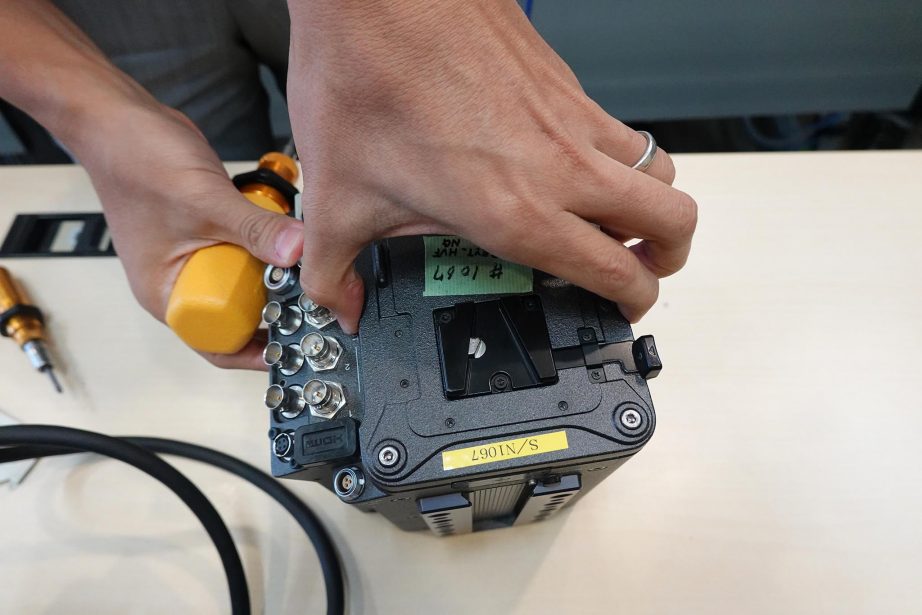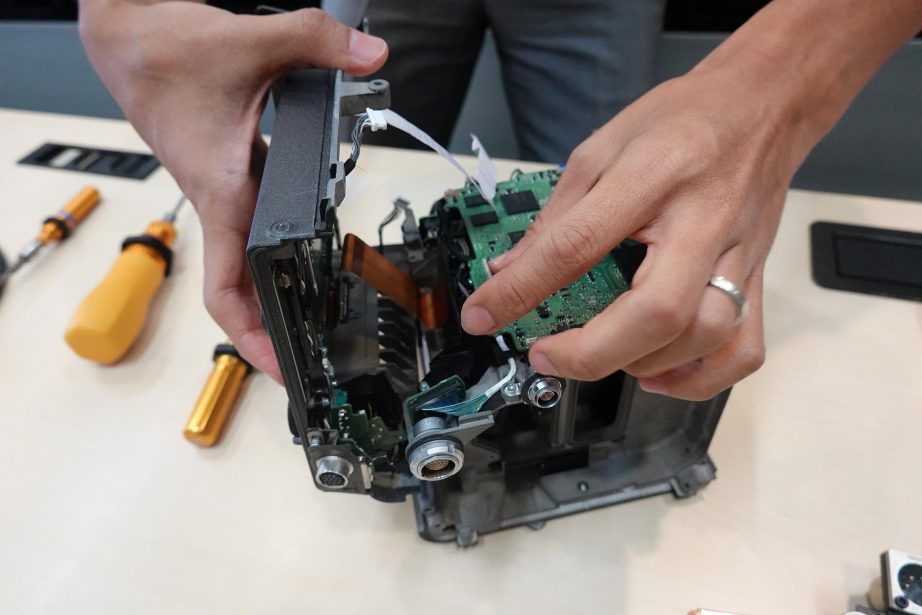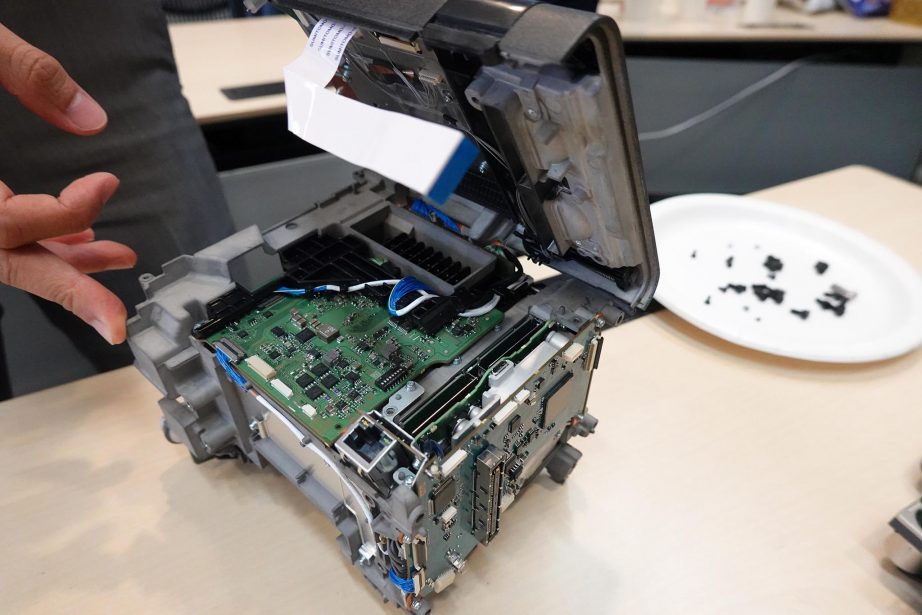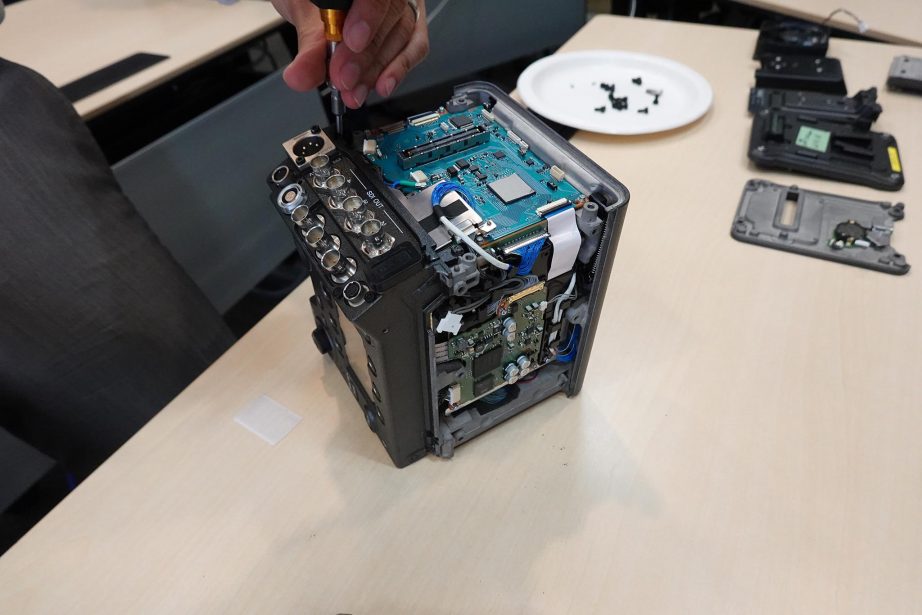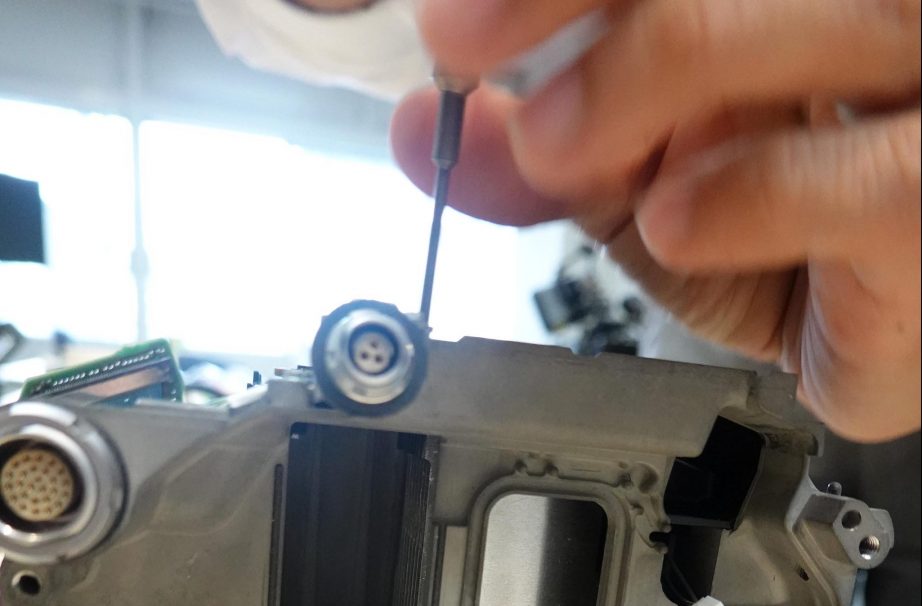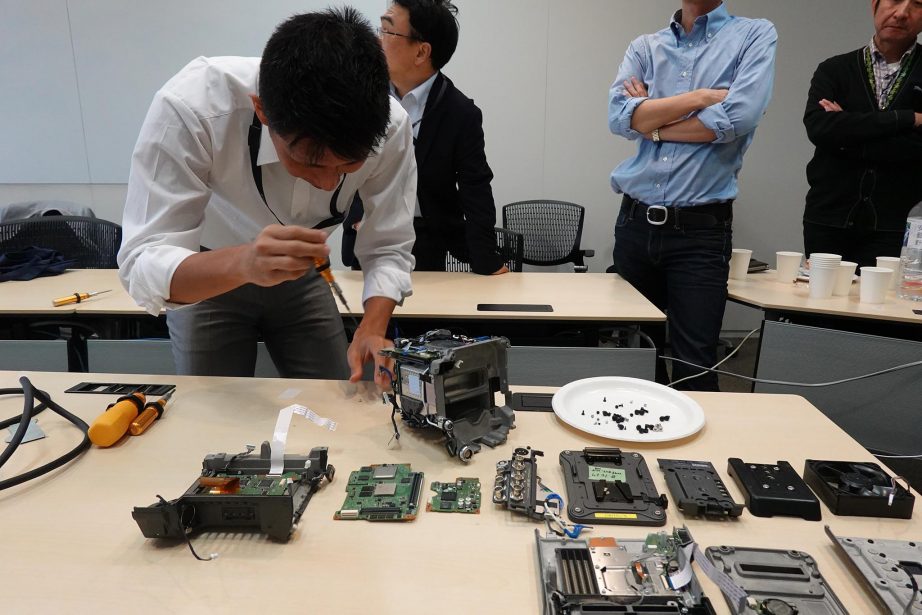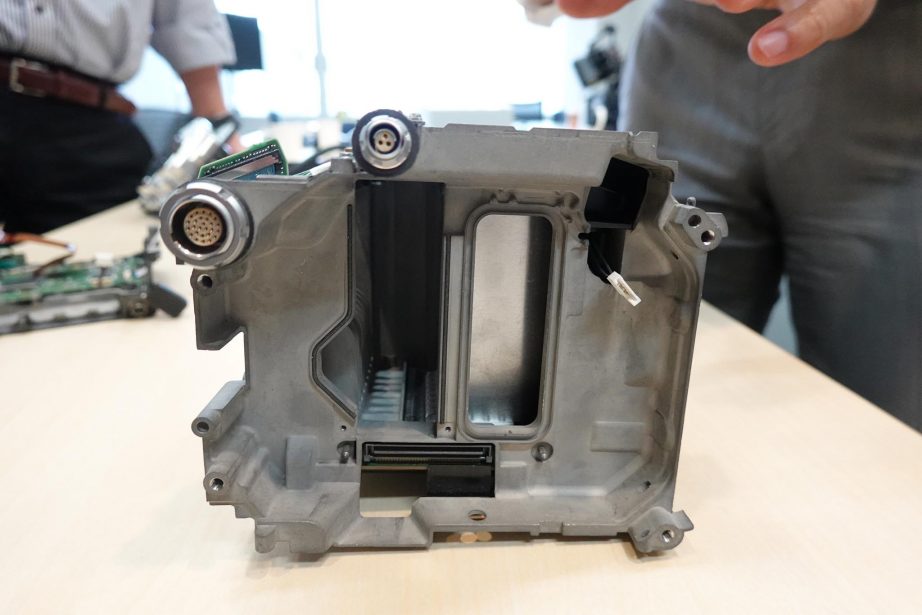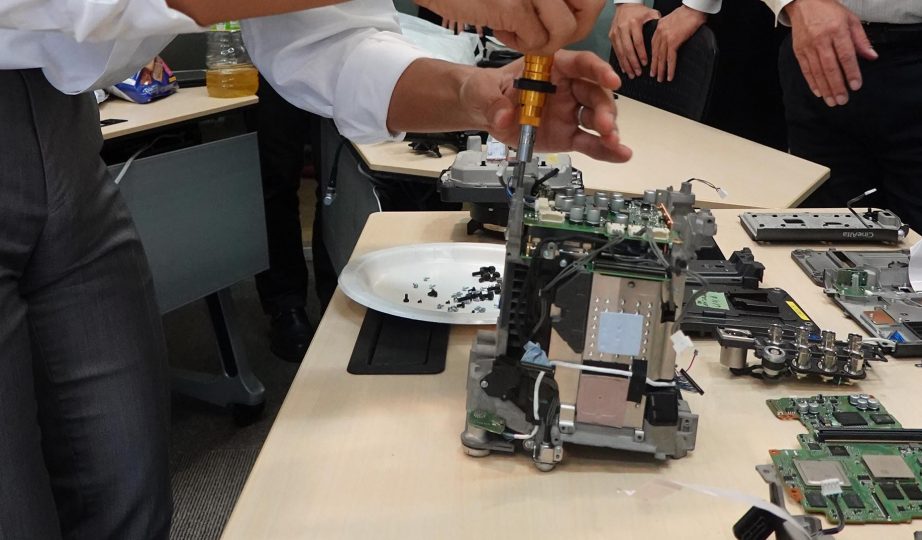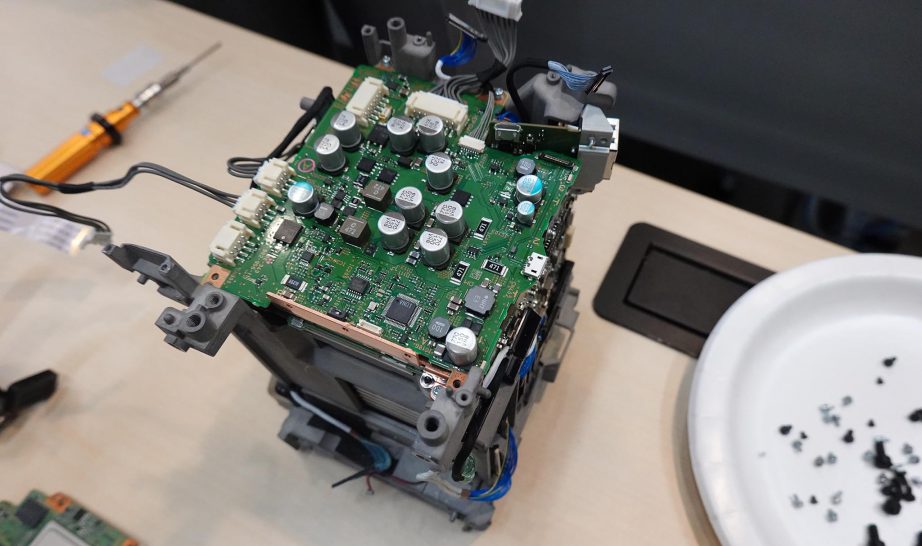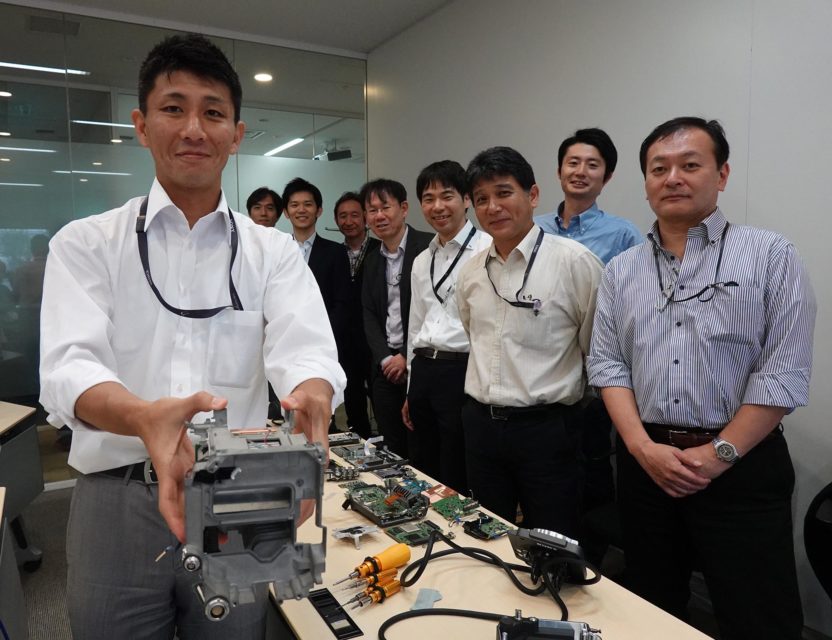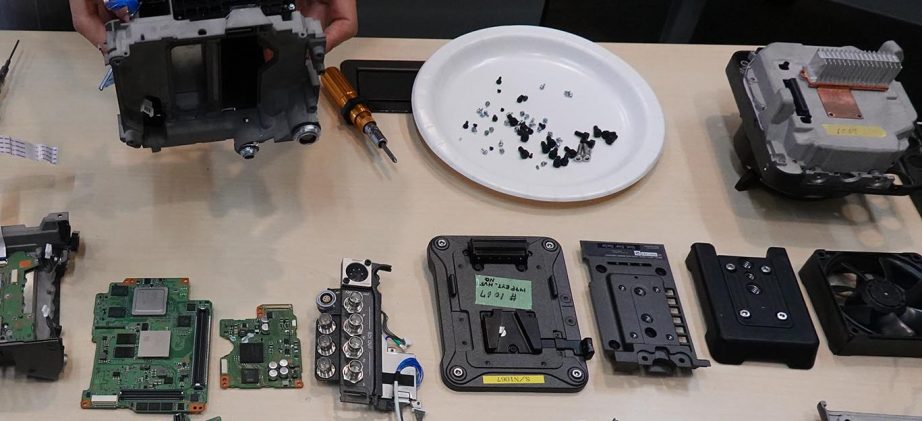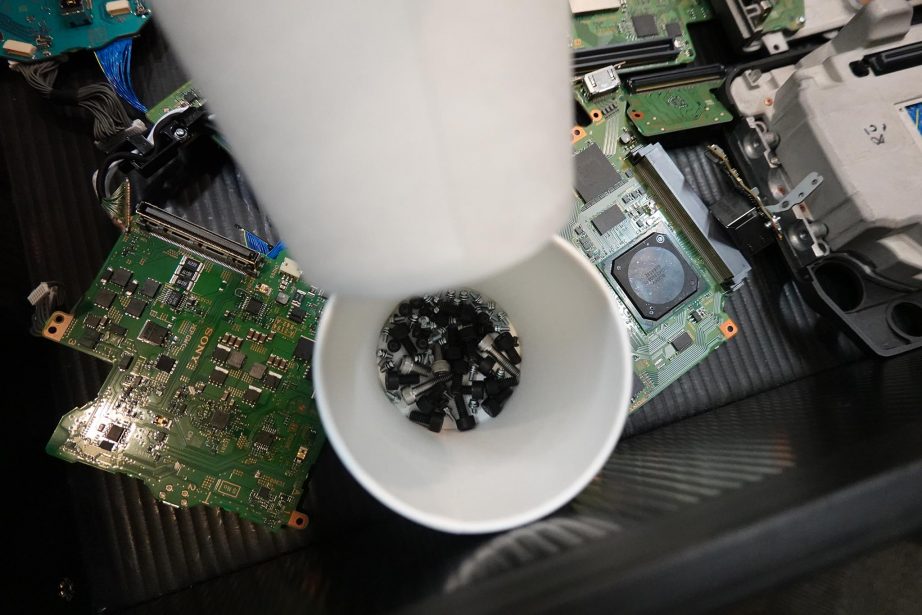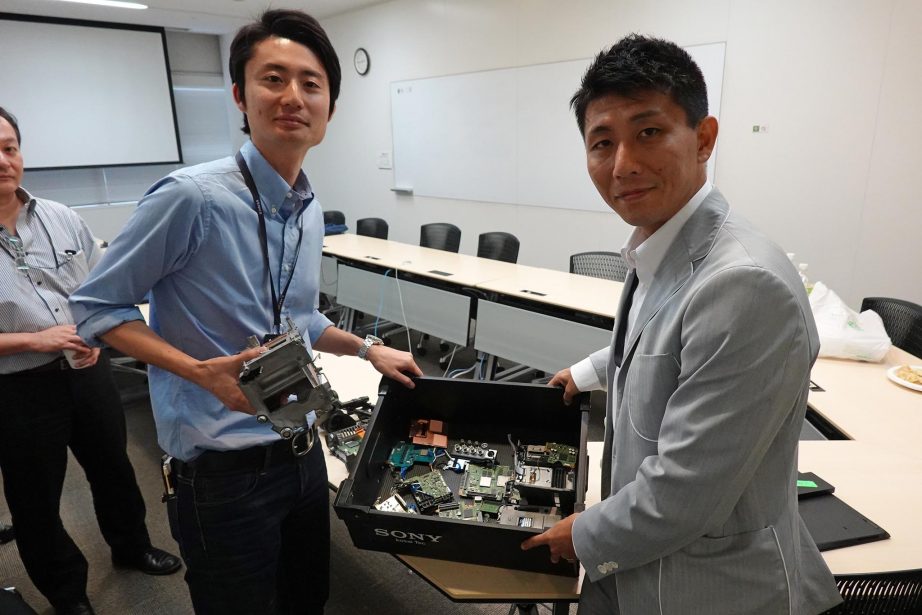This is part 2 of the FDTimes report on the Sony Atsugi Technology Center.
We are at the high point of the visit: a meeting with the mechanical, styling, electronic and software engineers who designed VENICE at the Sony Atsugi Technology Center.
JON FAUER: How did you come up with a design and the shape for the VENICE camera? It has a nice shape.
SONY Engineers: Usability was a top priority. We had a lot of discussions with cinematographers. Then, incorporating their feedback, our designers who specialize in styling proposed shapes based on aesthetics and artistic characteristics. That was done concurrently with many discussions among the mechanical and electronic engineers.
Was the E-mount part of the design from the beginning?
No. Not in the beginning.
If I remember correctly, in the beginning it was just a PL mount. And the E-mount came later.
Originally, the VENICE design used the FZ mount of the F55. The reason was that we had a few FZ lenses. Also, some vendors were supporting FZ with lens mount adapter kits. So, our original VENICE plan was an FZ mount with adapters for other lens mounts. But, simultaneously, the Alpha 7 and its E-mount ecosystem was a growing rapidly and gaining great market share. The E-mount lenses had an advantage of being among the smallest and lightest available. When we decided to use a Full Frame sensor in VENICE, the best match was our E-mount and that is how we chose it in the development phase.
The E-mount was a good decision. With its very short 18mm Flange Focal Depth, it allows users to have lens mount adapters to work with almost every lens mount and depth.
Additionally, the FZ mount had some advantages, but also disadvantages. FZ has a 19mm Flange Focal Depth, so it’s difficult to fit E-mount lenses. The FZ mount has a breech lock system: strong and tough. But many customers preferred a more secure mount, especially for large or heavy lens like the Angenieux Optimo 12x zoom. So, with VENICE we have the native E-mount with a lever lock. And around the outside of the E-mount, we have six screws to attach additional lens mounts. These are solid lens mounts, not adapters. VENICE ships with a PL mount.
I don’t think PL will be the standard forever and we are entering an era now where cinematographers are using all kinds of different lenses and mounts on the same show. The fact that you have the E-mount as the base is a great idea because you can move out from there. DPs can use not only Sony E-mount, but also RF, L, Leica M, LPL, EF, F, Panavision SP70, PL, PV, XPL, and so on. VENICE is very versatile.
The E-mount with lever lock design originated with our FS7 II (PXW-FS7M2) camera. There are many lens mount adapters for the E-mount, but as we mentioned earlier, customers asked us for a more robust system on the VENICE. Now, they have a choice: E-mount adapters or direct mounts with six screws.
I have a question for the software engineers. What does the software control?
Software controls three layers of overall functions on VENICE. One is Device control. That’s like a device driver for a personal computer. The second function of software is middleware control, which is like a file system for camera control and picture control. And then there’s Application control. Application control is what shows you the menu on the LCD, in the viewfinder and on output, for example, external monitors. Our software engineers worked on many kinds of layers of the software within the camera. So, VENICE is sort of like a small computer that takes beautiful pictures.
Also, the software works in two different timings. One is synchronized timing with each video frame. For every frame, the software works for the camera system. As for media control such as recording stream, it works in unsynchronized timing.
In recording, what’s the difference between X-OCN XT, ST, and LT?
X-OCN is short for “eXtended tonal range Original Camera Negative.” It is a codec that combines 16-bit linear encoding at bit rates that are much lower than you might expect. Used with the Sony AXS-R7 portable memory recorder, X-OCN gives you image quality comparable to F55RAW, but with file sizes that are much smaller. You get longer recording times, faster file transfers and more affordable post-production.
With X-OCN, settings like exposure index, color space, LUTs, gamma and log are not “baked into” the file. X-OCN treats these as monitoring settings.
VENICE has 3 varieties of X-OCN. X-OCN XT is the highest quality recording mode and it still provides reasonable file sizes comparable to F55RAW, making the workflow affordable and efficient. It is even better than F55RAW in terms of picture quality.
The other X-OCN varieties are X-OCN ST (Standard) and X-OCN LT (Light). With X-OCN ST, the files are around 30% smaller and X-OCN LT achieves an incredible 60% file size reduction over current F55RAW files.
Please tell us more about the VENICE Extension System where you separate the Sensor Head from the Camera Body.
Our CBK-3610XS Extension System works with any Sony VENICE. You don’t have to purchase a different camera. It lets you separate the image sensor, with its lens mount, from the camera body. To set up the Extension System, we separate the sensor / lens mount head from the VENICE body by unscrewing the four 3mm shiny hex screws in front. Attach the sensor / lens mount rear protective cover. Attach the body / recorder cavity cover. Connect the tether cable. It takes about a minute.
How long would it take to deconstruct the entire camera to its core?
About five minutes.
Five minutes? You’re joking.
I should not have said that. Engineers do not joke about such matters. Sure enough, in the next five minutes, Sony mechanical engineer Hitoshi Kawabata proceeded to take the VENICE totally apart. Like they say in the car commercials, “Do not attempt. Professional Sony Engineer on a closed track who also knows exactly how to put the camera back together again.”
Designing and Deconstructing VENICE
Sure enough, five minutes later, Mr. Kawabata has disassembled the VENICE camera down to its core magnesium skeletal structure.
Above, from left: Hitoshi Kawabata (Mechanical Designer); Takahiro Kagawa (Marketing); Yutaka Okahashi (Product Planner); Katsuya Kondo (Product Designer); Shuichi Akazawa (Product Designer); Shigeki Yamaoka (Software Designer); Yuuji Ooba (Product designer); Yuya Ono (Mechanical designer); Kenichiro Aridome (General Manager, Design Dept.) But next, they have to put the camera back together again.
Secrets of the pros: use a paper plate to gather all the screws. Use a paper cup when you want to move those screws to another room for reassembly.
Reprinted from Film and Digital Times February 2019 Edition #92

